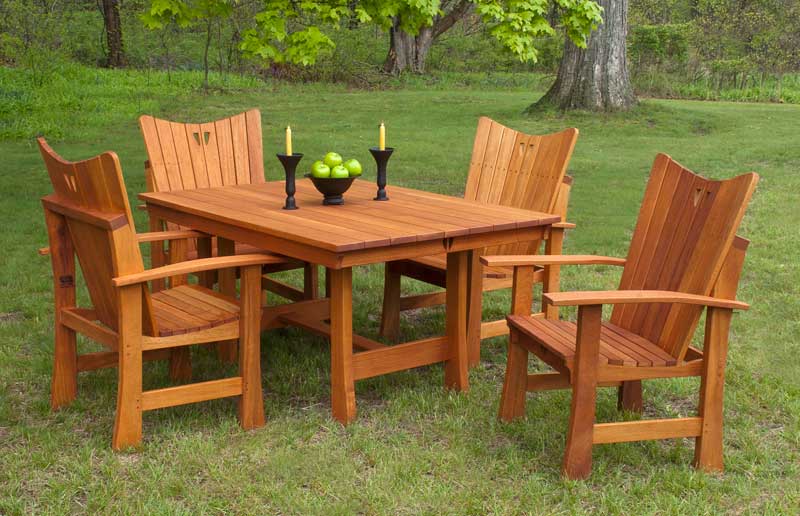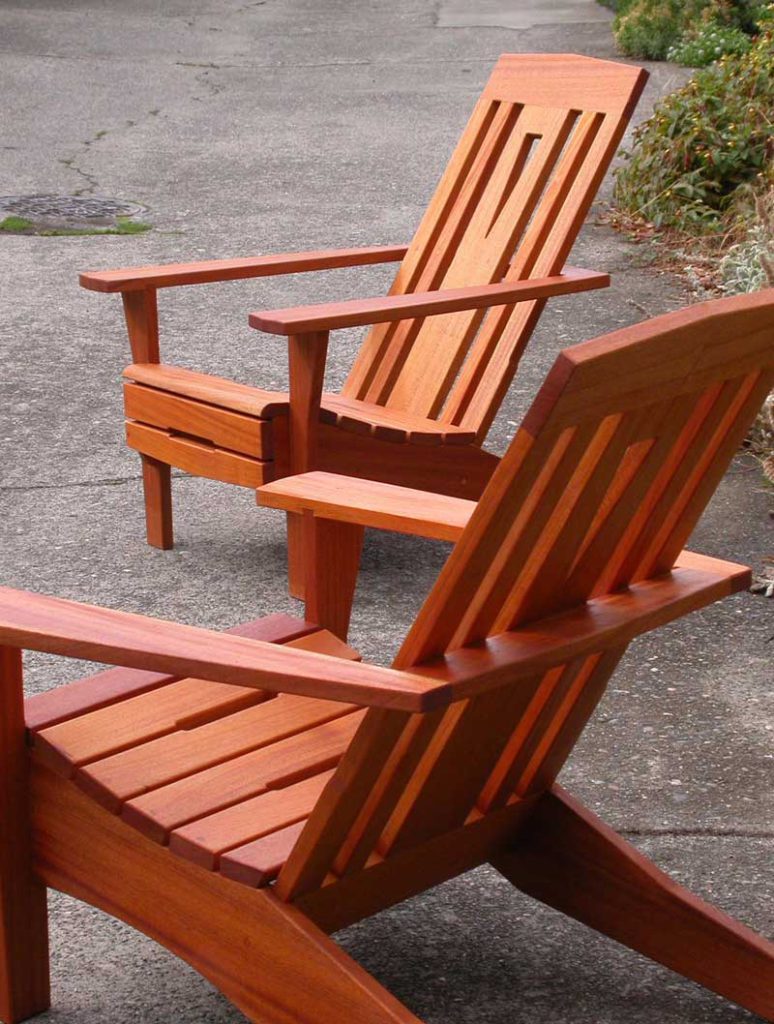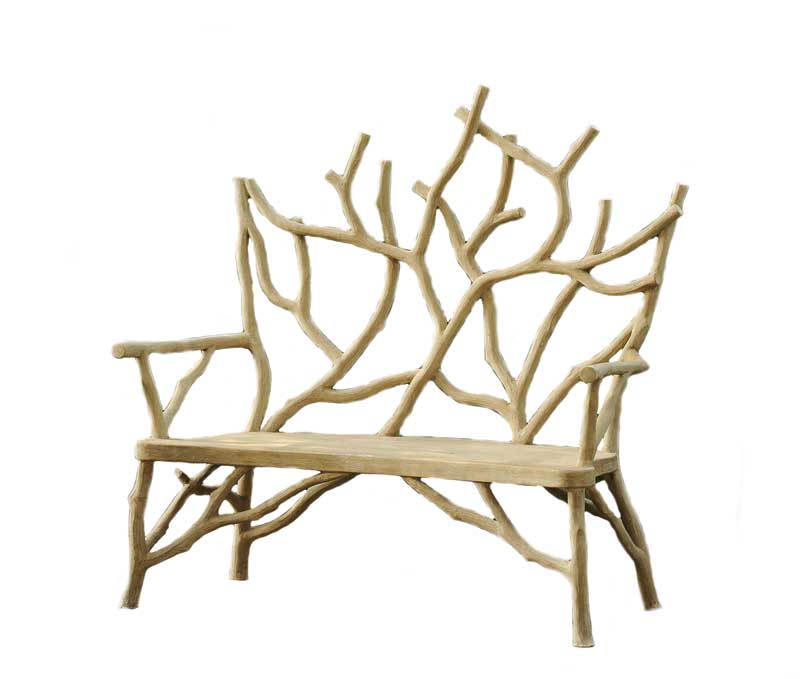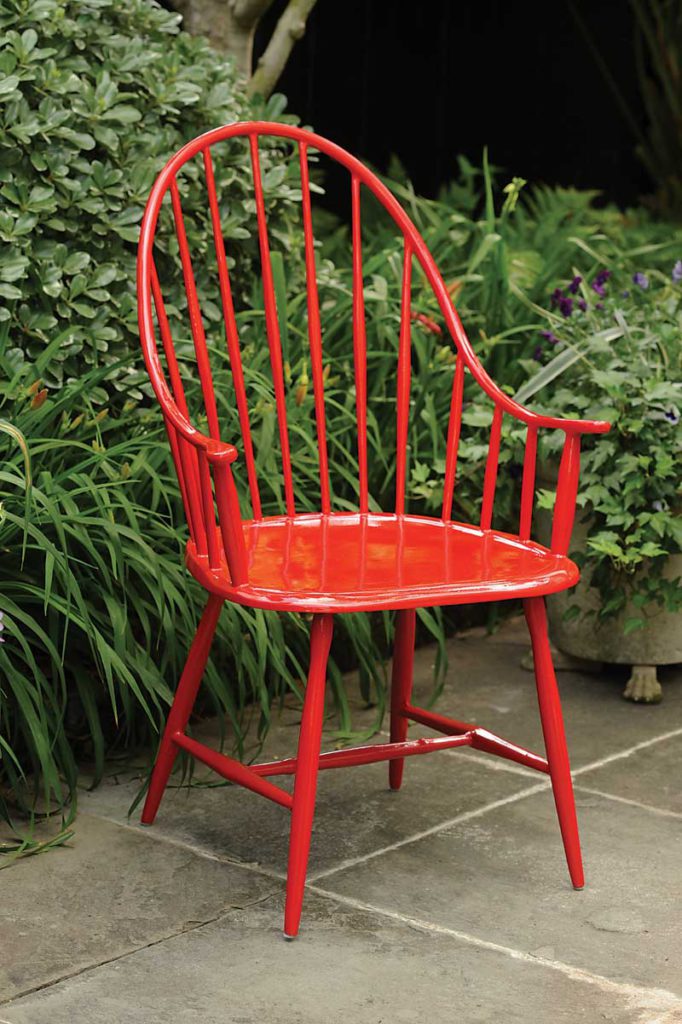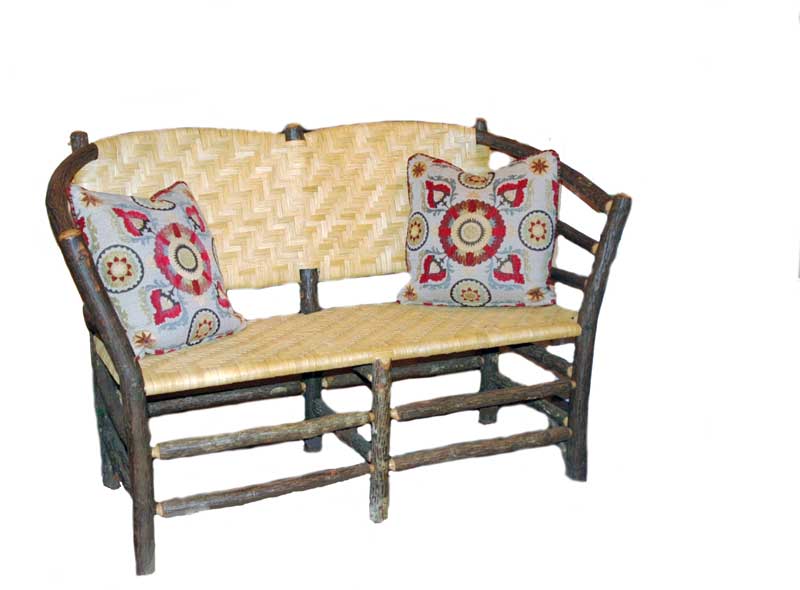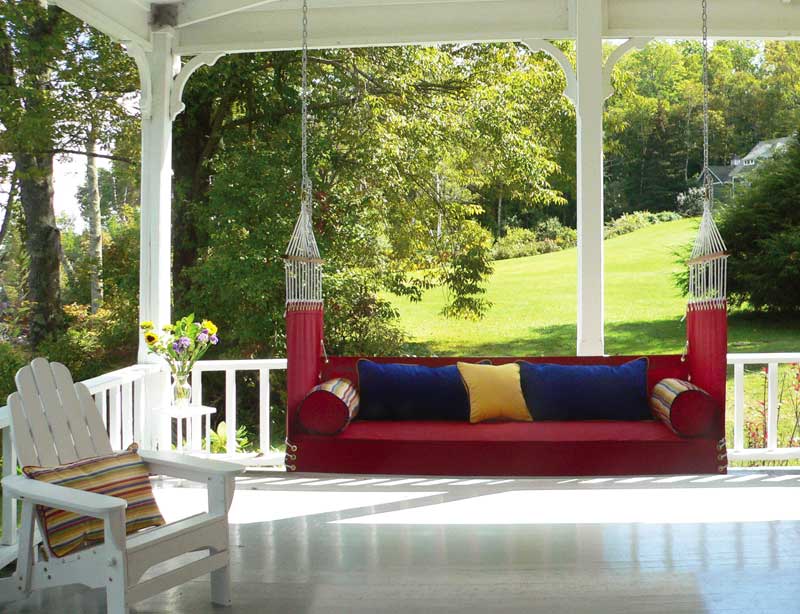Glide and bounce on this vintage-style lawn suite from Country Door.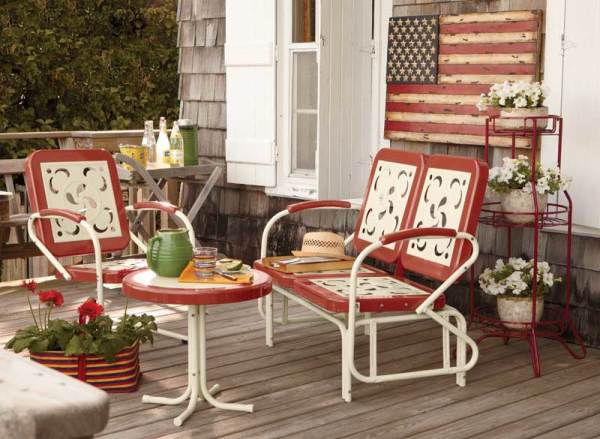
Outdoor furniture has a long and fashionable history. George Washington routinely left a collection of painted Windsor chairs outside at Mount Vernon. Cast-iron table sets with lacy Rococo ferns and leaves graced Victorian gardens as early as the 1850s, followed by novelty wire furniture like the courting bench. Rustic branch and bark settees appealed to those roughing it at Adirondack Great Camps in the 1890s, and there were even versions in cast concrete. The now ubiquitous Adirondack chair was patented as the Westport in 1905. Cushioned wicker easy chairs, rockers, and sofas were wildly popular for porches in the 1920s and beyond. In the 1940s and ’50s, colorful metal chairs and gliders were a hit with suburbanites, who often added cushions decked in tropical-themed fabrics.
Most of these outdoor furniture types are not only still available, they’re made of materials that can be both period sympathetic and weather-resistant. Take the Windsor chair from Charleston Gardens. Painted in bright colors, the proportions look correct, but surprise—it’s made of aluminum. Good facsimiles of Victorian cast iron, with its characteristic pierced cutouts and foliage, are now made of either powder-coated aluminum or resin. (Finishes mimic the classic white or verdigris green of Victorian cast iron.) Wire benches and bistro sets are factory woven of lightweight aluminum, steel, or other metals. Better ones are zinc-coated to prevent rust, then painted with powder-coated finishes.
Outdoor furniture in the rustic steam-bent twig and bark style continues to thrive in the styles famous from the Adirondacks and Pacific Northwest, although the makers are more likely to be based in Midwest Amish country than in the Northeast. A few companies, notably Old Hickory Furniture, are still making the classic woven-back branch-and-twig rockers and settees that grace the porches of historic inns and National Park lodges. Amazingly, another peculiar style from more than a century ago—faux bois—is also available in both rustic and English wood bench styles. The furniture looks like it’s made of rustic branches or cut millwork, but is actually concrete cast over a steel frame.
The ever-popular Adirondack chair comes in both new and traditional materials, and at all price points. Superior versions in wood are made from durable hardwoods with rust-resistant fasteners. The best painted versions are finished in weather- and UV-resistant paint, preferably marine grade. All-weather Adirondack chairs, tables, and accessory pieces built from recycled plastic can cost more than good-quality wood versions, especially if a designer appellation is attached. At the high end, furniture artisans create their own signature interpretations in long-lived tropical woods like mahogany or teak.
Wicker furniture from Lloyd Flanders’ ‘Nantucket’ series retains all the character of 1920s originals and is weather-resistant, too.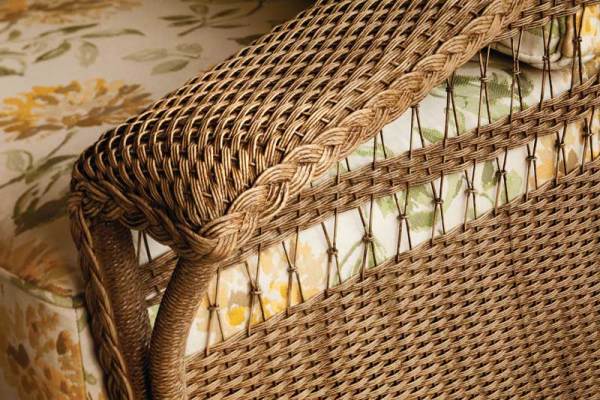
Another perennial favorite, wicker, has been evolving almost from the moment the first reed chairs were fashioned on bentwood frames in the 19th century. The trouble with early wicker was its vulnerability to rain, but when Lloyd Looms perfected a weatherproof wicker from strands of high-tensile wire wrapped with kraft paper in the 1920s, wicker really took off. Today wicker can be made from all-natural materials like plant fibers and wood canes, from synthetics, or a mixture of the two. Some wicker furniture is suitable only for sheltered locations like deep porches. Three-season wicker goes al fresco except in winter. True weatherproof wicker can stay outdoors indefinitely.
One of the great appeals of many types of porch and patio furniture is its ability to move, as a rocker, glider, or swing. Metal chairs made of tubular steel popularized in the 1940s could bounce as well as glide, making up for the stiffness of the seat. Larger gliders—metal sofas with fanciful cut-outs to allow rain to weep out—easily accommodate cushy upholstery for a truly comfortable porch retreat. Swings are still made from almost any material, from wood and metal to canvas and rope. And let’s not forget that camp basic, the hammock, which has been updated with soft-spun polyester webbing that feels like cotton and also comes in waterproof fabrics in stripes and solids.



